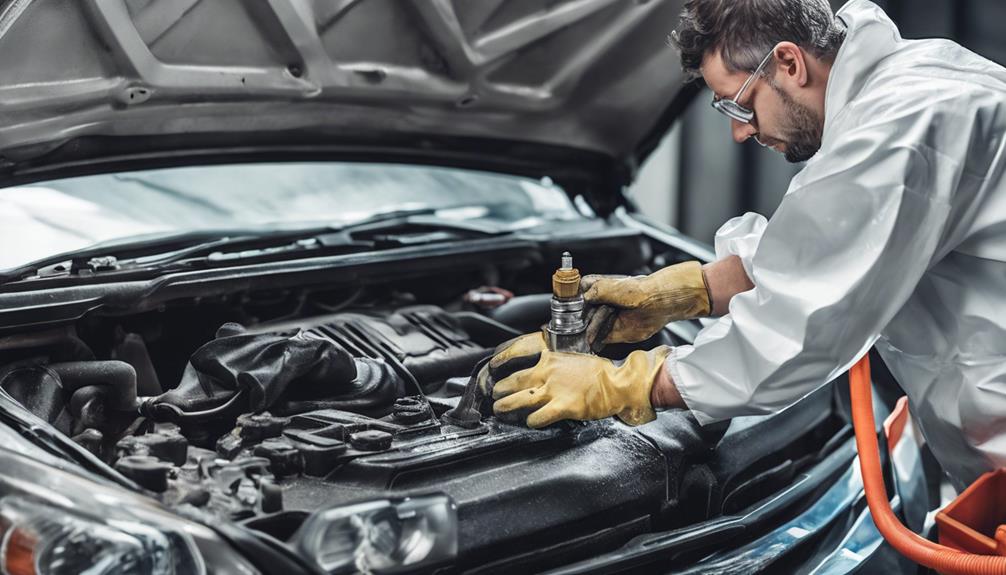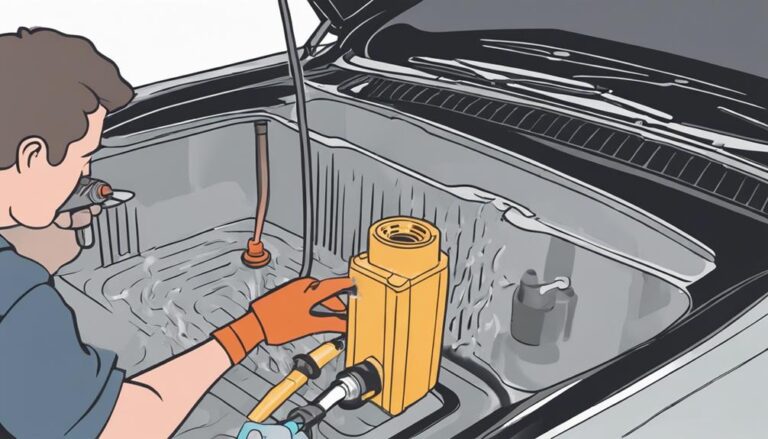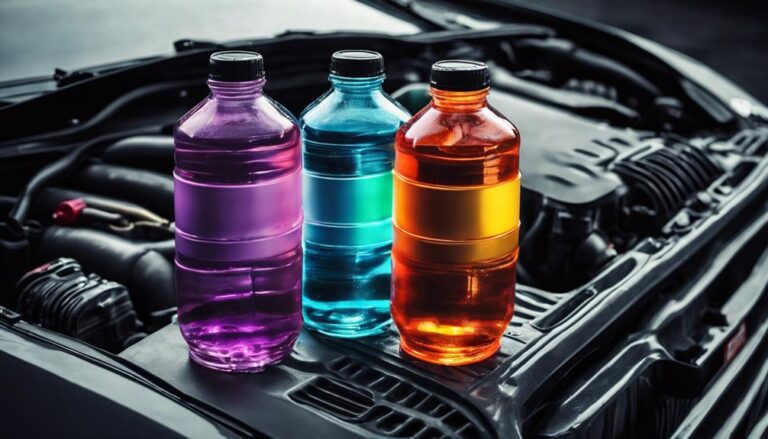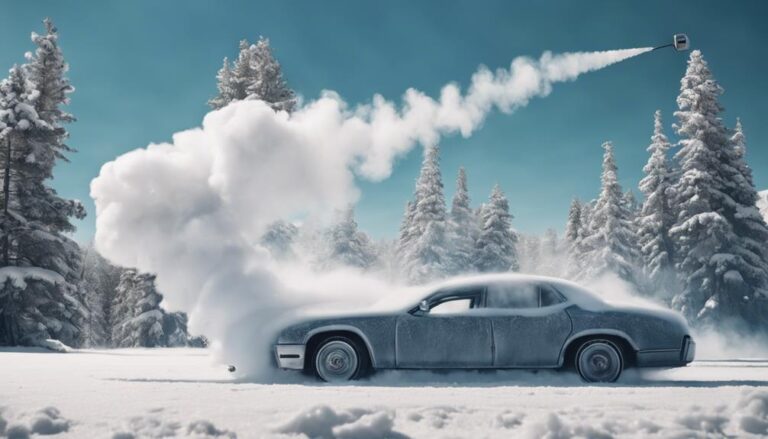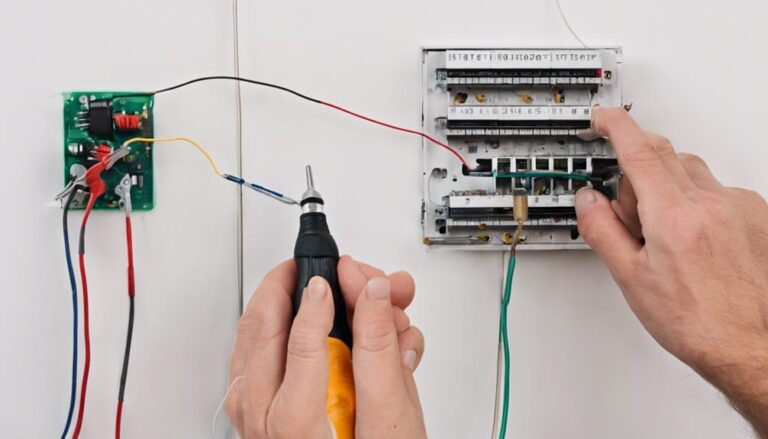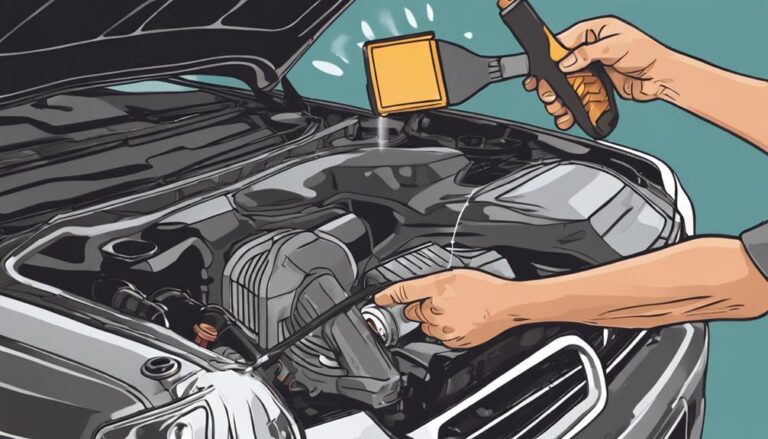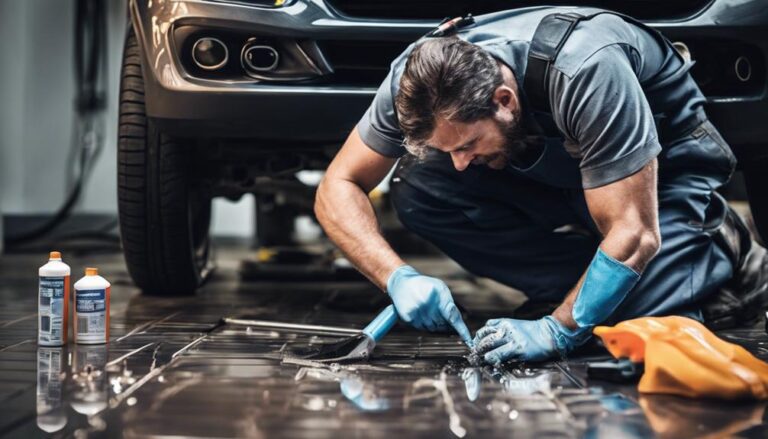What Are the Best Coolant Flush Practices?
Have you ever wondered if simply draining the coolant is enough to keep your engine running smoothly? While it may seem like a straightforward process, there are crucial steps in a coolant flush that are often overlooked but can significantly impact your cooling system's performance.
By understanding the intricacies of proper coolant drainage, the importance of selecting the right products, and the significance of thorough system flushing, you can ensure your engine's longevity and prevent costly repairs down the road.
Let's explore these essential coolant flush practices in more detail to help you maintain your vehicle's health effectively.
Key Takeaways
- Choose high-quality coolant flush products like Irontite Thoro-Flush for effective cleaning.
- Prioritize thorough flushing by removing debris with a garden hose and avoiding cleaners on aluminum parts.
- Conduct a comprehensive system inspection before flushing to address leaks, blockages, and corrosion.
- Complete post-flush procedures by tightening drain plugs, checking for leaks, and disposing of old coolant responsibly.
Proper Coolant Drainage Process
To begin the proper coolant drainage process, first ensure the engine has cooled down to prevent any potential injuries. Start by inspecting the radiator for any signs of damage or leaks that may need addressing before proceeding.
Next, locate the radiator valve or hose to begin draining the old coolant and debris effectively. It's crucial to use a large drain pan to catch the coolant and prevent spills that could lead to environmental contamination.
Once the draining process is complete, be sure to dispose of the old coolant properly to prevent harm to the environment and wildlife. Remember, repeating the drainage process may be necessary to ensure all old coolant and contaminants are entirely removed from the system.
Selection of High-Quality Coolant Flush Products
For optimal maintenance of your cooling system, selecting high-quality coolant flush products is crucial. When considering products for your radiator flush, Irontite Thoro-Flush coolant cleaner stands out as a recommended high-quality option. This product ensures thorough cleaning of the radiator, setting the stage for effective cooling system maintenance. Additionally, additives like All Weather Seal and Ceramic Motor Seal can provide extra protection during the flushing process, enhancing the longevity and efficiency of your radiator and engine.
When choosing coolant flush products, it's essential to evaluate product efficacy and cost comparison. Investing in premium products may initially seem more expensive, but the long-term benefits in terms of system performance and durability often outweigh the initial cost. Moreover, considering environmental impact is crucial. Look for products that offer environmentally friendly disposal options to minimize harm to the ecosystem.
Flushing the Cooling System Thoroughly
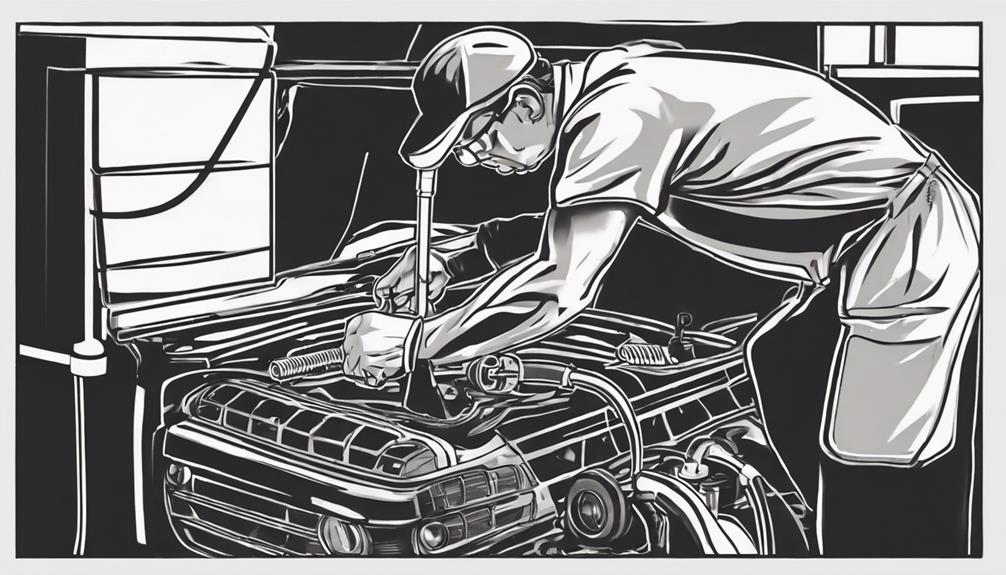
When considering a thorough flush of your cooling system, prioritizing the use of a garden hose for debris and corrosion removal is recommended to ensure optimal performance and longevity. Some caution against using cleaners on aluminum cylinder heads due to potential damage. For a more comprehensive cleaning, removing the radiator and hoses for a super-duper flush is suggested by some experts. Regularly replacing coolant every 2 years is vital for maintaining the cooling system's efficiency. Implementing a routine of flushing the system with water, running the engine, allowing it to cool, and repeating the process can significantly enhance safety and effectiveness.
| Method | Concerns |
|---|---|
| Garden hose | Aluminum sensitivity |
| Super duper flush | Comprehensive clean |
| Regular maintenance | Coolant replacement |
Importance of System Inspection Before Flushing
Inspecting your cooling system thoroughly before proceeding with a flush is essential to identify any potential issues that could impact the process. Preventive maintenance plays a crucial role in ensuring the longevity and efficiency of your vehicle's cooling system.
By conducting a detailed inspection, you can uncover any leaks, blockages, or damaged components that might worsen during the flush. Checking key elements such as the radiator, hoses, water pump, and thermostat is vital to troubleshoot any existing problems before initiating the coolant flush. This proactive approach not only prevents further damage but also sets the stage for a successful flushing process.
Moreover, identifying signs of corrosion or rust during the inspection can guide you in selecting the appropriate cleaning products for the flush, improving its effectiveness. Overall, a systematic system inspection is integral to maintaining the health of your cooling system and ensuring optimal coolant circulation post-flush.
Final Steps After Completing Coolant Flush
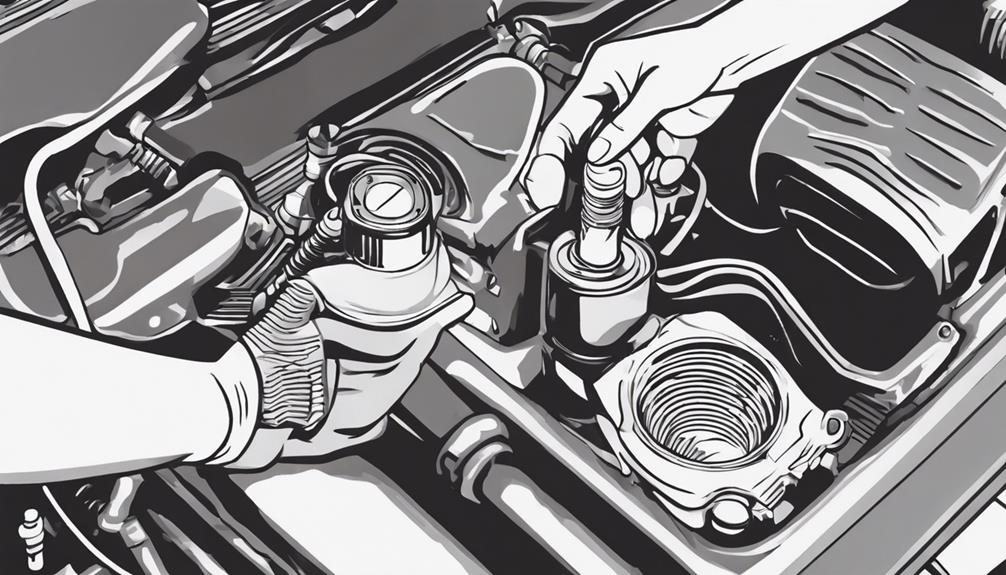
After completing a coolant flush, your next critical step is to ensure all drain plugs are securely tightened to prevent leaks. This is vital in maintaining the integrity of your cooling system. Once the plugs are secured, top off the coolant reservoir to the appropriate level. Proper coolant level is essential for the cooling system to function effectively and prevent overheating.
After refilling, conduct a thorough check for any signs of leaks or drips under the vehicle. Addressing any issues promptly can prevent potential damage and maintain the efficiency of the cooling system. Start the engine and monitor the temperature gauge to confirm that the cooling system is working as intended.
Lastly, dispose of the old coolant properly at a designated recycling center. By recycling the coolant, you not only protect the environment but also ensure responsible waste management. Following these final steps after a coolant flush will help keep your vehicle running smoothly and efficiently.
Frequently Asked Questions
What Is the Best Cooling System Flush?
When determining the best cooling system flush for your vehicle, consider coolant types and their benefits. Regular flushing is crucial for optimal performance and longevity. Choose a product that suits your system to maintain efficiency.
How to Do a Proper Coolant Flush?
To do a proper coolant flush, start by draining the system completely. Dispose of the old coolant properly to prevent corrosion. Refill with a 50/50 coolant-water mix. Run the engine with the heater on to circulate the new coolant.
What Is the Best Practice When Changing Coolant?
When changing coolant, ensure you select the right coolant type. To enhance flushing process efficiency, mix the coolant properly and run the car with the heater on for even distribution. Draining and refilling with premixed coolant can prevent contamination.
How Does a Dealership Do a Coolant Flush?
When you visit a dealership for a coolant flush, they wield professional equipment to drain, flush, and refill your system with precision. Following manufacturer guidelines, they ensure your coolant levels are spot-on for optimal performance.
Conclusion
In conclusion, when performing a coolant flush, it's crucial to follow proper procedures to maintain the health of your vehicle's cooling system.
Think of it like giving your car a refreshing drink of water to keep it running smoothly and efficiently.
By choosing high-quality products, flushing thoroughly, and inspecting the system, you can prevent unexpected failures and extend the lifespan of your engine.
Remember, regular maintenance is key to keeping your vehicle in top shape.

